Racial purity at all costs. Belief in inherent superiority over neighboring nations. And bestial crimes against thousands of victims, justified by one shocking argument:we kill Slavic subhumans, so nothing bad happens. This is the German vision of the world in the middle of the 10th century.
Hundreds of bulky volumes have been written about the historic success of the Ludolfing dynasty which originated in Saxony. Historians - especially German ones - pay much less attention to the price paid by their closest neighbors for the reunification of the Germans in the 10th century.
The cooperation of the Germanic tribes was forged in solidary defense against the bloodthirsty Magyars, but also in the joint conquest of the Slavic tribes carried out for decades. The fight went on without mercy and without regard to the value of human life. Or at least:the life of the Slavs. The opinions expressed in the course today sound extremely disturbing.
They fell for the whole millennium, but the notes of chauvinism and a sense of historical right resonate in them all too clearly. It's as if we were seeing a mirror image of the ideas that made our grandparents' Europe run with blood.
Wild foul-smelling beasts? They must be Slavs
The earliest texts devoted to the Slavs, written at the turn of the 8th and 9th centuries, were a pile of lies and nonsense.
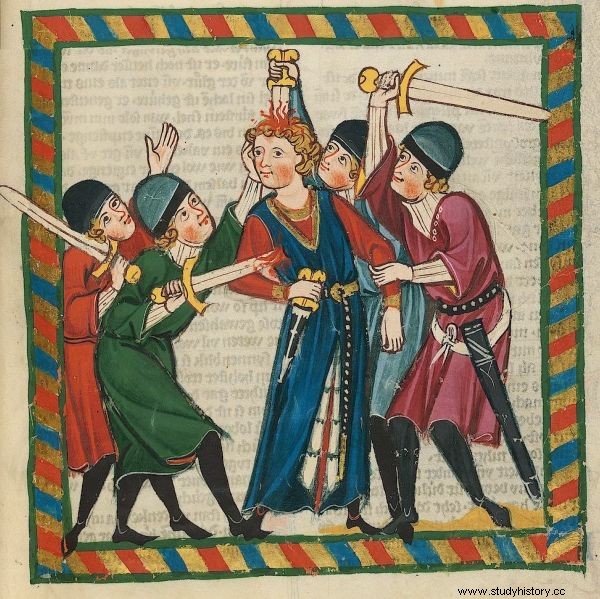
Medieval Germany really had a lot on its conscience. Especially in their relations with the Slavs.
For example, according to the author of legends about the life of the first missionary who ventured east of the Elbe, Abbot of Fulda named Sturm, the Slavs behaved like wild beasts. They ran naked in the bushes, flocking and smelled like heavenly creatures.
At the sight of them, not only did Sturm tremble, but also his steed. In turn, the author of the story briefly commented that "apart from fierce animals" the holy man did not encounter any living creatures in the east. In other words: all Slavs were denied humanity.
This particular story - not to say racist agitka - was written in the days of Charlemagne. In an era when even the brightest readers were inclined to believe that the mysterious Slavs are not much different from bears. More than a century and a half later, such an absurdity would not pass anyone's throat. After all, the Slavs were seen every day. It has been empirically confirmed that they do not run naked and do not have animal hair. This does not mean, however, that the attacks have stopped. At most, their character has changed.
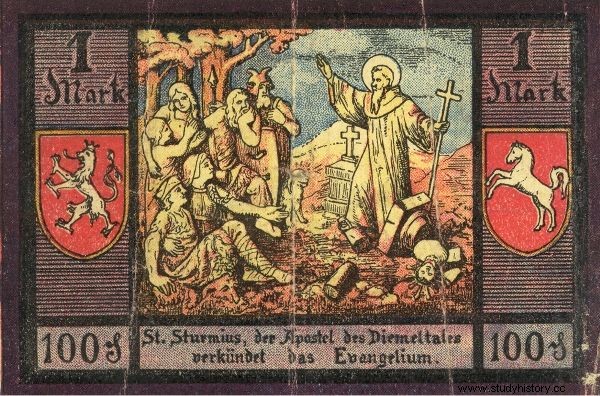
In 1921, Saint Sturm - a man who reportedly believed that all Slavs were wild beasts not washed away - even found German banknotes.
The German authors focused their entire attention not on the appearance, but on the moral condition of their eastern neighbors.
Polish cattle, Slavic dogs
Bishop Merseburg Thietmar, who lived in the times of Bolesław the Brave, wrote about all Poles that "they rejoice when they do evil". On the other hand, about Lutykes living a little further west, he expressed the opinion that "they are always united in doing evil".
Both the former and the latter were , in his opinion, inherently tricky, cruel and primitive . Even comparisons to dogs and cattle broke away from him - often in the 10th and 11th centuries - .
Also Bishop Gumpold, the author of one of the first lives of St. . They are barbarians from beyond the limits of the civilized world. As such, have a duty to submit to cultural Germany and follow a good example of them. However, they have no right to expect their lot to improve.
They can baptize, learn Latin, and pat prayers. Still, even their rulers will be much lower than even the rank-and-file German knights.
The worse kind of people
The perception of the Slavs as second-class people was also reflected in the records of Adam of Bremen, who lived in the 11th century. This German chronicler segregated Christians into "good" and sincere and "bad" and at least partially false.
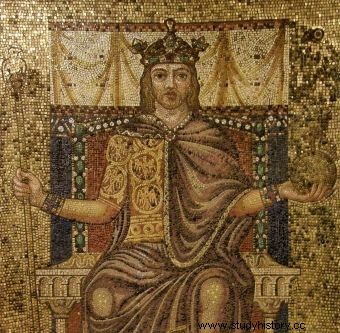
The founder of medieval Germany, Otto I. Was he who Hitler should have considered his idol?
Of course, he included mainly the Slavs in the second group. And even those who accepted the faith of Christ generations earlier.
Two legs, two hands, no soul
A sense of superiority formed the basis of the ethos of the emerging German aristocracy. The rulers, in an outright obsessive way, took care not to thin their blood and not to let people deprived of an appropriate lineage into their ranks. Even in the 9th century, marrying someone from outside one's own class was punishable by death.
This was how undesirable ties with the lower-ranked, but still German families were treated. Any relationship with the Slavs did not even fit in anyone's mind. And no wonder. The Slavs had two arms and two legs, like every human being, but in the opinion of the Germans - or at least a large part of them - they were not full-fledged people at all.
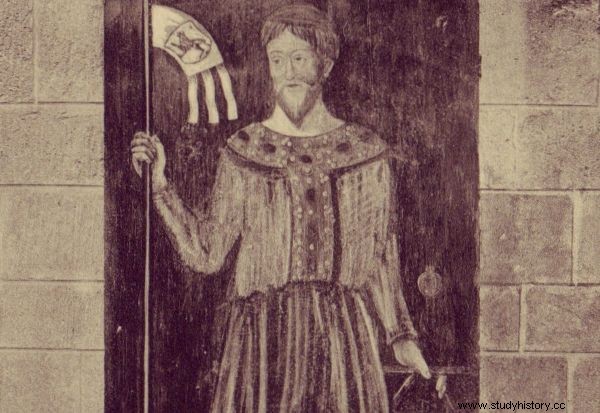
The Germans had fond memories of Gerona for centuries. Here is the margrave in the illustration from the 16th century.
We will shorten your sufferings
The effects were easy to predict. As long as the Slavs appeared to the German nobles as subhumans, they could poison and slaughter them with impunity, without regard to the principles of faith. After all, shortening the suffering of this or that wild beast was considered an act of mercy rather than a sin.
The legates and margraves, whom King Otto I entrusted with sovereignty over the Slavic borderlands, were the most cruel. The first was the infamous Geron. In 939 he invited thirty pagan chiefs to a feast. He lured them with an offer to negotiate, and as soon as they arrived he poisoned them all in cold blood. Only one noble managed to escape and report the crime to his fellows.
The signal was obvious:the rules of diplomacy and the rules of culture, the mastery of which the Germans prided themselves on, did not apply to Slavic dogs in any way. They couldn't count on any protection.
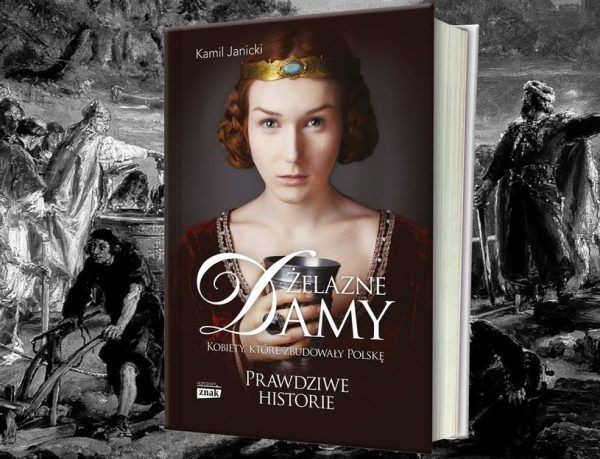
Learn about the fascinating history of women who built Poland in the darkness of the Middle Ages. Ruthless, ambitious, talented. Kamil Janicki's "Iron Ladies" is now on sale !
Seven hundred victims. No regret
A dozen years later, on the advice of the same Geron, the Germans beheaded seven hundred Slavic captives in order to persuade the elders of their tribes to be more submissive. It was not without a truly devilish spectacle.
Hundreds of dead bodies were piled up around the enemy chief's impaled head. In the midst of this sea of death, Geron had one and only human being left alive - the enemy's adviser on his nerves. His eyes were gouged out, his tongue plucked out and abandoned to his fate.
When finally, to the delight of the Slavs, the margrave died in 965, his enormous Eastmarch was divided among several influential magnates. This group included Hodon, who, without declaring war, sneaked onto the Piast land in 972 and suffered a humiliating defeat at Cedynia.
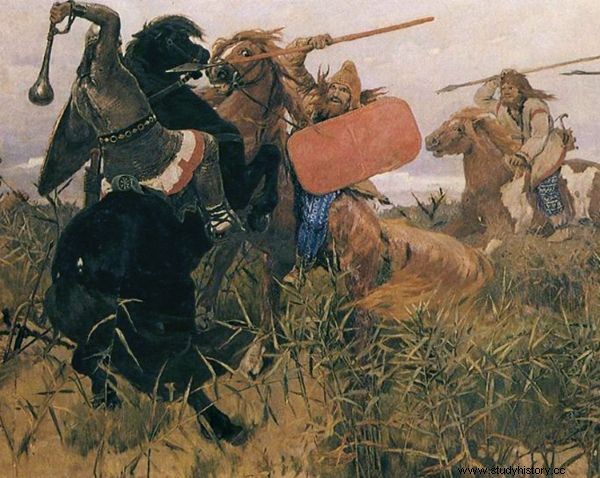
Slavs in battle in a 19th-century painting.
The other marchioni were no less cynical and ruthless types. And if they came into contact with the Slavs at all, it was only to humiliate and use them. This was the case with Margrave Theodoric of Haldensleben, who was in charge of the so-called Northmarch.
Not for the dog ... marriage to a German princess
The chronicler Helmold from Bozów described the history of his relationship with prince Mściwoj. He was the commander of the Obodrites, and thus one of the strongest Slavic tribes in Połab. To emphasize his position, Mściwój tried to arrange the marriage of his son with the niece of a Saxon prince, Bernard I. The latter agreed to the wedding, but at the cost of alliance and military support. Mściwój obediently sent his son on a Saxon expedition to Italy, giving him back a powerful team of a thousand warriors.
The fights - as always during imperial expeditions to the south - were not easy, and the Germans probably pushed the Slavs to act in the front lines by no accident. Mściwój lost almost all of his people, paying a salt tribute of blood for a coveted marriage. However, when the chief's son returned to the Połaba, Bernard severed all contacts with him.
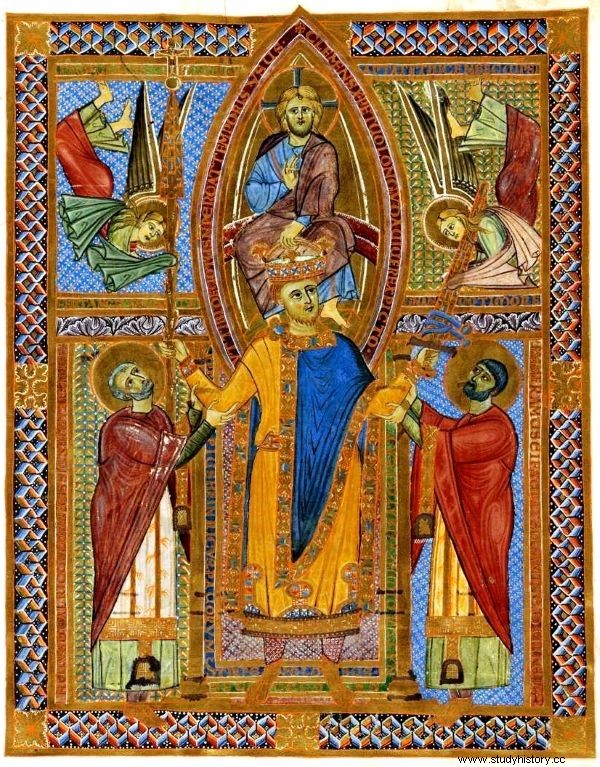
German kings stubbornly made saints of themselves. However, they had a lot on their conscience. And their subordinates in the east - even more.
From then on, the case of the unfortunate Slavic ruler was taken over by Theodoric, deprived of any honorable dilemmas. It was he who decided that it is not allowed to give a dog as a wife to the princely relative. And that the wedding would never take place.
Pact with the devil himself
If Theodoric denied the humanity of a commander who was ready to sacrifice hundreds of soldiers to support the German emperor, then he had to have all other Slavs as animals. And even more importantly - he showed it. Even the non-tolerant Bishop Thietmar wrote that the Slavic peoples "who, after accepting Christianity, were subject to our kings and emperors by paying tribute, experienced great tribulation through the willfulness of Prince Theodoric."
The example of this man - as well as his fellow margraves and his infamous predecessor - sheds light on the atmosphere in which the German state was formed. At the same time, it allows us to re-appreciate the scale of success of… the first Piasts.
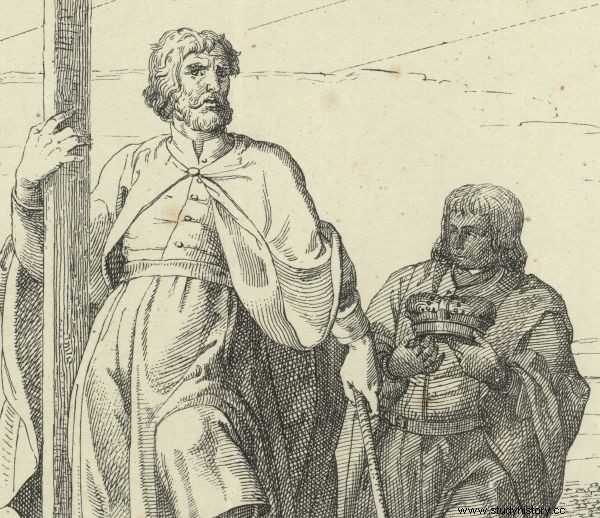
Mieszko I on 19th-century lithography.
It was in these years and in these conditions that Mieszko I and his wife Dobrawa established relations with the German Empire. The Duke of Greater Poland not only won over the sovereign of Europe (Otto I, who was so ruthless towards the Slavs), but also won the status equal to the highest-born German aristocrats!
In 980 or 981 he married the Margrave Oda. The daughter of the same Theodoric, who every Slav had for a beast unworthy of respect. A few years later, if German medievalists are to be believed, he himself received the title of margrave and nominal administrator of the Slavic lands between the Elbe and the Oder. However, this is a story worthy of a separate article. Or maybe even… the whole book.
***
Are you fed up with the powdered and polished history of the beginnings of Poland? We too. Kamil Janicki presents the painfully true version of events. Massive crimes, slave trade, the realities of life beyond the borders of civilization and the brutal games of early medieval courts. Here is a fascinating story about the ruthless, ambitious and power-hungry wives of the first Piasts. And about the country they took part in building.
"Iron ladies. The Women Who Built Poland ” are already on sale. You can buy the book with a discount at empik.com !
Sources:
The article is based on the literature and materials collected by the author during the work on the book "Iron Ladies. The Women Who Built Poland ” . Find out more by clicking HERE .
- Althoff G., Ottones. A royal power without a state , Warsaw 2009.
- Althoff G., Saxony and the Elbe Slavs in the tenth century [in:] The New Cambridge Medieval History , bar 3: c. 900-1024 , eds. R. McKitterick, T. Reuter, Cambridge 1995
- Babij P., From Łączyno to Raxa, 929–955. Great and small battles of the Połabian Slavs [in:] "Migrations. Journeys in history ”. Antiquity and the Middle Ages , ed. M. Franz, Toruń 2015.
- Borawska D., Mieszko and Oda in the group of the Ludolfing consanguineorum [in:] Medieval Poland Society , vol. 1, ed. S. Kuczyński, Warsaw 1981.
- Friedmann B., Untersuchungen zur Geschichte des abodritischen Fürstentums bis zum Ende des 10. Jahrhunderts , Berlin 1986.
- Karpf E., Dietrich, Markgraf der sächsischen Nordmark [in:] Lexikon des Mittelalters , vol. 3, München 1985
- Leyser K., Communications and Power in Medieval Europe. The Carolingian and Ottonian Centuries , London 1994
- Leyser K., Ottonian Government , The English Historical Review, vol. 96 (1981).
- Ludat H., An Elbe und Oder um das Jahr 1000. Skizzen zur Politik des Ottonenreiches und der slavischen Mächte in Mitteleuropa , Weimar-Köln-Wien 1995.
- Matla-Kozłowska M., The First Przemyślids and their country (from the 10th to the mid-11th century) , Poznań 2008
- Myśliński K., Poland towards the Polabian Slavs until the end of the 12th century , Lublin 1993.
- Strzelczyk J., Połabian Slavs , Poznań 2013.
- Pleszczyński A., Germany towards the first Piast monarchy (963–1034). The birth of the stereotype , Lublin 2008.
- Reuter T., Germany in the Early Middle Ages 800–1056 , New York 1991.
- Sikorski D.A. , The Church in Poland of Mieszko I and Bolesław the Brave. Considerations on the Limits of Historical Cognition , Poznań 2013.
- Sullivan R.E., The Carolingian Missionary and the Pagan , Speculum, vol. 28 (1953).
- Thiele A., Erzählende genealogische Stammtafeln zur europäischen Geschichte , vol. 1, issue 1, Frankfurt 1993.
- Thietmar, The Chronicle of Thietmar , transl. M.Z. Jedlicki, Krakow 2012.
- Tyszkiewicz L.A., Germany's Eastern neighbors in the historiography of the end of the 10th and the beginning of the 11th century , "Silesian Historical Quarterly Sobótka", vol. 37 (1982).
